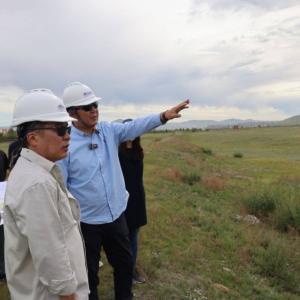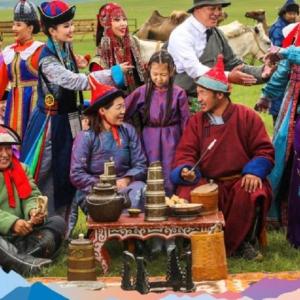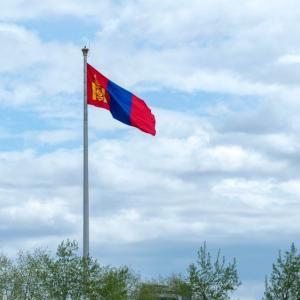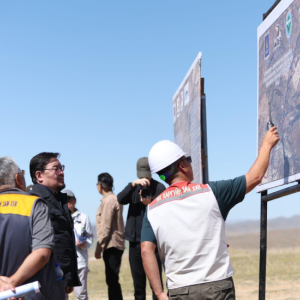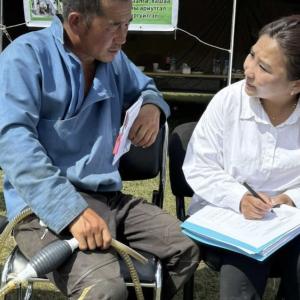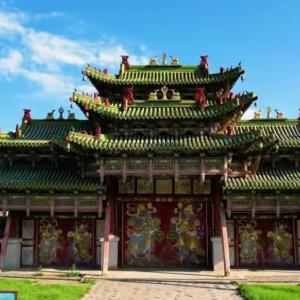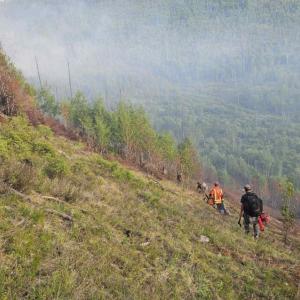B.Gantulga: 70 percent of Mongolian saiga antelope deliver twin offspring
The Mongol Messenger
Ulaanbaatar /MONTSAME/. According to the latest study, there are 5,070 Mongolian saiga antelopes in the territory of Mongolia. In 2014, its population reached 15 thousand as a result of being protected by the World Wide Fund for Nature. Unfortunately, the number plunged to 3,000 in 2018 due to spread of the sheep and goat plague as well as drought and dzud (severe winter conditions). Thus, MONTSAME National News Agency discussed the matter of the protection and study of Mongolian saiga antelope with Species Officer at WWF Mongolia, Dr. B.Gantulga.
-MONGOLIAN SAIGA ANTELOPES ARE ESTIMATED TO ORIGINATED 2 MILLION YEARS AGO-
-How much is the population of the Mongolian saiga antelope according to the latest census? What indicators are used to identify whether their numbers are going down?
-According to a study conducted this January, the number of Mongolian saiga antelopes have reached over 5,000. The species is endemic to the territory of Mongolia, and especially the territory of Gobi-Altai and Khovd aimags. There are two subspecies of the saiga antelope in the world: One is ‘saiga tatarica’ which we call the alert antelope, and the other is ‘saiga tatarica mongolica’--the Mongolian saiga antelope. The saiga tatarica species inhabit the territory of Kazakhstan and Russia. These subspecies continue to decrease in number due to various reasons, such as habitat fragmentation, poaching as well as co-occurrence with livestock of herders. The Mongolian saiga antelope was registered as Critically Endangered in the Red List of Threatened Species in 2002. As for Mongolia, hunting of the animal was banned from the 1930s, putting it under legal protection.
-About 8,000 Mongolian saiga antelopes were counted in a WWF study in 2010-2012. However, the current number is around 5,000. Its population seems to be continuing to decrease?
-Our organization has been carrying out monitoring studies on the Mongolian saiga antelope population for the last 20 years. As an aftermath of the dzud in 2001-2002, their number decreased to about 750. Afterwards, the work to protect the animals was accelerated, and as a result, their population grew back to 15 thousand by 2014. In 2016, it reduced little by little to about 11 thousand. Following this, the number decreased by 55% due to the sheep and goat plague in 2016-2017, plunging down to about 5,000. In early 2018, their number once again decreased by 40 percent due to blizzards that continued for 4 days, with its population barely reaching 3,000. However, as a result of a good summer and winter last year, their number increased to 5,070.
-When did the Mongolia saiga antelope come to be? What kind of plants does it eat?
-Studies have found that there used to be many more species of the antelope. 10 species of antelopes were discovered between 1760 and 1953. Currently, only 2 subspecies have survived with the rest having gone extinct. Some researchers believe that the antelopes originated around 700 thousand to 2 million years ago based on archeological research. The Mongolian saiga antelope is adapted to the desert. It mainly feeds on species of plants such as anabasis and kali tragus commonly found in the desert region.
-Each and every animal keeps the ecological balance of the world. What is the role of the Mongolian saiga antelope in keeping the balance in the Gobi desert?
-Of course, the animal is a single part of the ecological balance, and is hunted by Gobi predators. On the other hand, as the species travel in herds, they positively affect the cycle of plants in the area alongside fertilizing the region with their dung. In other words, the saiga antelopes have an important role in spreading seeds as well as the coverage of vegetation. The holes dug with their hooves also allows seeds to grow in it.
-MONGOLIAN SAIGA ANTELOPES RUN UP TO 90 KM/H-
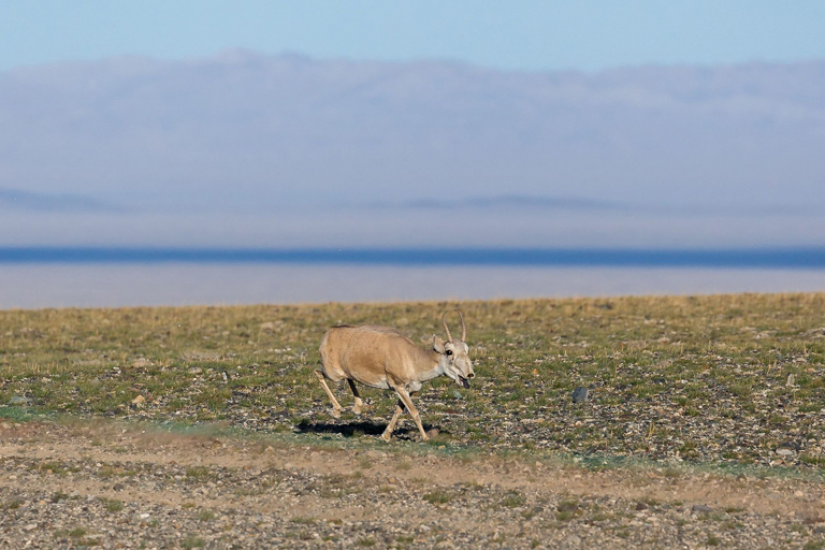
-You have mentioned that there are two subspecies of the saiga antelope. What are the features of ‘saiga tatarica mongolica’ or the antelope in Mongolia?
-The saiga antelope is adapted to the Gobi region, where there are little to no obstacles. This is due to their ability to run at a great speed to defend themselves from predators. It can run up to 90 km per hour for 5-10 minutes. The animal’s adaptation to this particular method of survival can be seen from their nasal cavity. The cavity has a large cartilage forming the nose ducts, and its capillaries are able to quickly warm up the cold air as it goes to the lungs. That is how the saiga antelope is able to run for a long period of time even in the freezing cold temperatures of winter.
-How are people held liable for poaching Mongolian saiga antelopes?
-Poaching used to be quite common over 10 years
ago. However, as the corresponding law and regulations began to be more
strictly enforced, its cases dropped significantly. Now, it only occurs once or
twice each year. There have been two cases during the sheep and goat plague in
2017. However, no cases of poaching have surfaced last year. The law states
that a citizen is subject to criminal liability if they not only hunted
endangered animals, but also collected their organs, and attempted to
transport, store, and sell them. Furthermore, they are imposed with penalties that
are twice the amount of the ecological and economic assessment values. The
saiga antelope has good legislative protection.
Alongside stricter enforcement, training and
promotions have been actively organized in recent years, which include
improving the citizens’ knowledge of the corresponding law and promoting
positive information about the saiga antelope.
-The entire world knows about endangered animals such as the polar bear and pandas. What type of measures is the WWF in Mongolia taking to promote the Gobi bear (mazaalai), Mongolian saiga antelope, and Przewalski’s horse - the endangered animals in Mongolia?
-In aims of protecting the six rare and endangered animals in the Gobi region, the WWF Mongolia launched the ‘Great Gobi 6’ initiative. In its framework, activities of local environmental protection organizations began to have correlation. As a result, the work being done to protect rare and endangered animals became possible to be monitored as a whole, with aims to attract investment for the measures, and promote corresponding information.
-I recently saw the organization doing various promotions such as a person wearing a mask of the Mongolian saiga antelope taking their picture with a well-known figure.
-The foundation is currently organizing the ‘Bukhundei’ campaign. The campaign’s main goal is to inform the citizens about the Mongolian saiga antelope as well as how it has become endangered and the threats.
-Are there any previous studies and research conducted on relocating and increasing the population of the saiga antelopes in Mongolia?
-There was a state policy on reintroducing the Mongolian saiga antelope in the desert near the Altai Mountains from 1984 to 1988. After the collapse of socialism, the work was discontinued, and the few species that were introduced to the area were unable to survive. However, in the last few years, the WWF, the Ministry of Environment and Tourism, and other partnering organizations have been working together on a plan to reintroduce the Mongolian saiga antelope. As a result, a separate group of the antelope will be created from the core population. This will protect the species from going extinct if one group dies off due to various diseases such as the sheep and goat plague as well as drought and dzud.
-THE MONGOLIAN SAIGA ANTELOPE POPULATION WILL GREATLY DECREASE IF THE SHEEP AND GOAT PLAGUE RESURFACES-
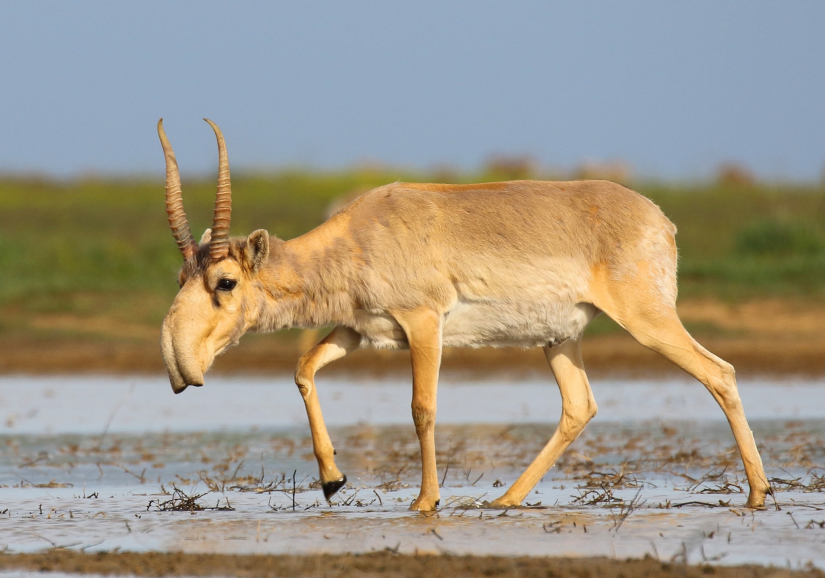
-So despite the protection of the animal since 1930, the spread of the sheep and goat plague was never taken into account?
-The sheep and goat plague spread in Mongolia for the very first time in 2006. It is also the first case for the disease to infect a wild animal. There had been no prior experience combating against the disease. However, at the initiative of the WWF in 2006, a workforce consisting of the officials of the Ministry of Environment and Tourism and corresponding local organizations was quickly established to work on the issue. The workforce immediately organized quarantine measures as well as disposal and sterilization of carcass.
-Are there any other factors that have a negative impact on their population?
-It is impossible to foresee weather conditions as well as how diseases will mutate. According to officials, it is likely for the sheep and goat plague to resurface after 2 to 3 years. This is due to the harmful germs, which the animals have grown immune to, dying and new ones replacing them. If the disease resurfaces, the population of saiga antelope is at high risk of decreasing.
-Is it possible to protect them from various zoonotic diseases by injecting them with vaccines?
-It is impossible to vaccinate them as the saiga antelopes are wild animals. The main way to prevent it from happening again is to properly vaccinate livestock animals, and quickly eliminate the infection.
-Would it be correct to assume that the saiga antelope became infected from livestock animals?
-Although it has yet to be confirmed that the saiga antelope caught the infection from livestock, livestock animals that were in the habitat of the Mongolian saiga antelope began to be infected from August 2016. Saiga antelopes began to die from the disease from December that year, which is why some might guess that.
-MONGOLIAN SAIGA ANTELOPES HAVE LITTLE OPPORTUNITY TO DRINK FROM WELLS AND WATER SOURCES-
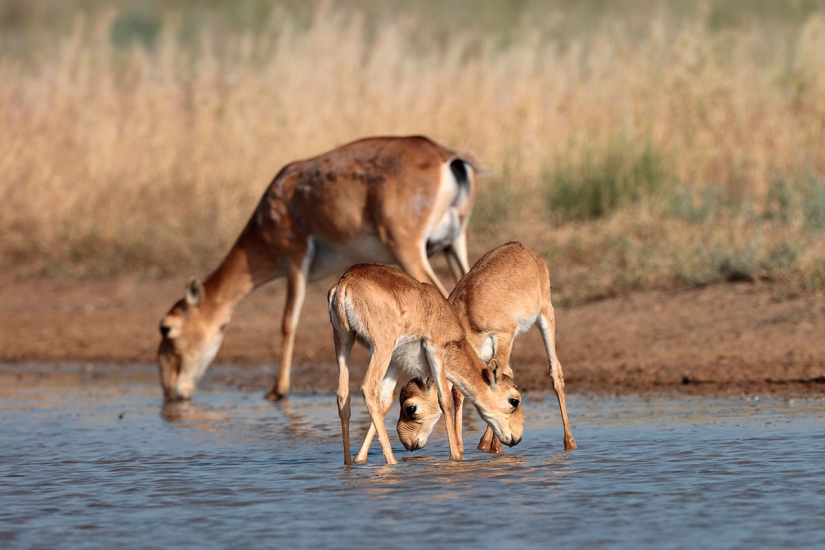
-The water supply would, of course, be scarce in the desert region. It is important to create a favorable habitat to increase the population of the Mongolian saiga antelope. What type of work is the WWF conducting in this area?
-The habitat of the Mongolian saiga antelope has only a few sources of water. When herder households move near those water sources, the antelopes’ opportunity to get near to drink from it becomes very little. For this reason, the WWF is taking appropriate measures to restore wells and water sources that are drying up.
The most important work that needs to be done in the near future is to provide the Mongolian saiga antelope with opportunities to get close to wells and water sources. To do this, households that live near water sources in spring and summer have to be moved farther than their current locations. As a result, the animal’s population will be protected from going extinct.
-I heard that the golden eagle is the main “enemy” of the saiga antelope. Could you elaborate on this?
-Just like other cloven-hoofed animals, the saiga antelope is adapted to giving birth in large numbers in a short period of time. That’s how they lose only a little amount of their offspring. If there are a lot of offspring that were born around the same time, it becomes impossible for the predators to catch all of them. And as a result, most are able to survive. Animals such as golden eagles, wolves, and in some cases foxes—especially the corsac fox hunt the newly born offspring.
-When does the animal usually give birth to their offspring?
-They give birth over the course of 1-2 weeks in mid-June. During years with plenty of grass to eat and mild winters, about 70 percent of the saiga antelope give birth to twins. This was found in the study conducted by a researcher named B.Buuveibaatar.
Compared to other cloven-hoofed animals, the Mongolian saiga antelope has a better chance of growing their population. However, it is common for them to die due to natural occurrences as the animal is very sensitive.
-How long is their gestation period?
-With their mating period starting from mid-December, the saiga antelope give birth to their offspring around mid-June. In other words, their gestation period is about 5 to 6 months.
-By average, how long is the lifespan of the saiga antelope?
-Although there have yet to be any studies on the exact number of years they live, some research works say that the lifespan of the saiga antelope is an average of about 5 years. Further studies might discover its lifespan to be even 10 years.
S.Munkhbaatar

 Ulaanbaatar
Ulaanbaatar














